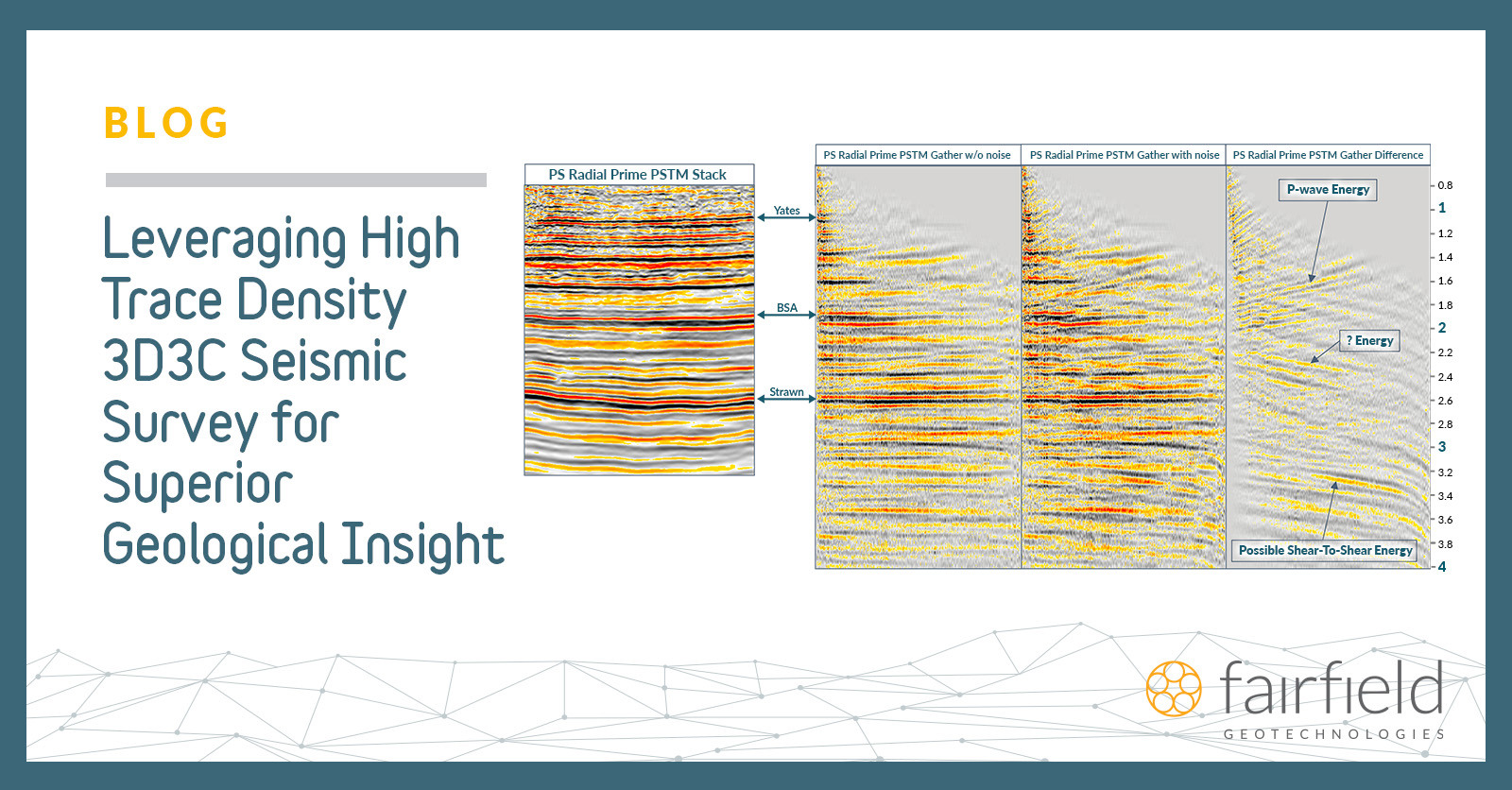Leveraging High Trace Density 3D3C Seismic Survey for Superior Geological Insight

Historically, seismic surveys focused predominantly on acquiring P-wave (PP) data, which primarily captured limited offset ranges focused on 15-to-30-degree angles. The purpose of these crucial tools in land seismic data acquisition, particularly for hydrocarbon exploration, was to create precise imaging of prospective hydrocarbon targets hidden beneath the Earth's surface. Converted wave (3C) data and encompassing shear wave (PS) data were sporadically collected with specialized three-component geophones. This additional set of data was considered an advantageous, albeit accidental, bonus.
However, as our understanding of geology and seismic surveys evolved, the lens through which we observed and interpreted seismic data also began to shift. This change marked the genesis of the high trace density (HTD) 3D3C seismic survey, a design explicitly crafted to encapsulate the natural increase in amplitude of converted shear waves with offset. This increase is primarily affected by convergent angles and VP/VS changes in geology.
A prime example of this approach is the C-Ranch survey in the Permian Basin exploration, a meticulous initiative aimed at capturing alterations in PP and PS-wave velocities, amplitudes, and phase with offset at all stacked pay horizons. This resulted in an unrivaled depth and breadth of PP and PS information with transformative implications for the field of 3D seismic data survey design.
Procedure: Exploring the Depths of the Permian Basin
Spanning an impressive 279 square miles, the C-Ranch HTD 3D3C survey covers over 20 potential hydrocarbon-rich areas. Within this geographical boundary, from the Grayburg formation at 4,500 feet to the Ellenburger formation at 14,500 feet,
a 10,000-foot stacked petroleum system unravels.
In 2003, a small legacy 3C3D dataset was collected in this territory. The data offered invaluable insights into the Wolfcamp and Strawn formations by revealing a quality PS-data volume and presenting stark amplitude differences between PP and PS data, a phenomenon related to variations in rock properties and seismic facies changes.
Utilizing past data, the 2019 High Trace Density 3D3C seismic survey was more ambitious, amassing a wealth of amplitude, phase, and velocity information. The purpose of this was to interpret intricate geological shifts that subtly shape the potential of Permian Basin oil production.
Results: Triumph Over Challenges
The C-Ranch High Trace Density 3C3D seismic survey started with a grand vision, painted meticulously with specific specifications for source and receiver line spacing, station spacing, and live line patch. However, the project was limited by a scarcity of 3C geophones in North America.
A creative workaround was needed, and the solution lay in using dithered dual source lines spaced 82.5 feet apart. This ingenuity doubled the number of sources per square mile while decreasing the required receiver stations for the same spread. The result was an impressive square bin size of 41.25 feet by 41.25 feet with a nominal fold of 1024 per bin. This is despite the fact that only 46,000 3C geophones were mobilized for the survey.
Why the C-Ranch HTD 3C3D Survey Is a Game-Changer
With unconventional resource targets, the need for detailed reservoir characterization becomes a non-negotiable factor. Data on facies changes, fluids, and geomechanics become critical. Shear waves, in contrast to PP impedance which can fluctuate due to the presence of fluids, remain impervious to these changes. The reason lies in their inherent characteristics: Shear wave elastic properties can provide vital insights into fracture orientation and fracture density, enabling a more precise understanding of the Earth's subsurface.
By measuring PS and PP wave velocities, the estimation of the density term can be significantly improved, potentially unveiling changes in geomechanics and facies. This underscores the question "How do seismic surveys work?" by showcasing their application in real-world scenarios, thus highlighting their practical value in field exploration.
The HTD design of the 3C3D survey, which maintains a high signal-to-noise ratio of zero-to-48+-degree angles, emerges as equally crucial as the HTD design of the PP data. The distinct yet complementary datasets offer a comprehensive view of the geological and geophysical factors at play, enriching our understanding of the subsurface and better-guiding exploration efforts. The development within the C-Ranch will benefit from completion strategies and optimized well spacing on a well-by-well basis if strong geomechanical properties can be derived from these datasets.
In essence, integrating both PP and PS wave data holds immense value in predicting and targeting rock properties related to both conventional and unconventional hydrocarbon resources in the Permian Basin. It is this integration, combined with the high-resolution data generated by the HTD 3D3C survey design, that sets the stage for a more informed and effective exploration of the Permian Basin's immense hydrocarbon potential.
Author
Bruce Karr